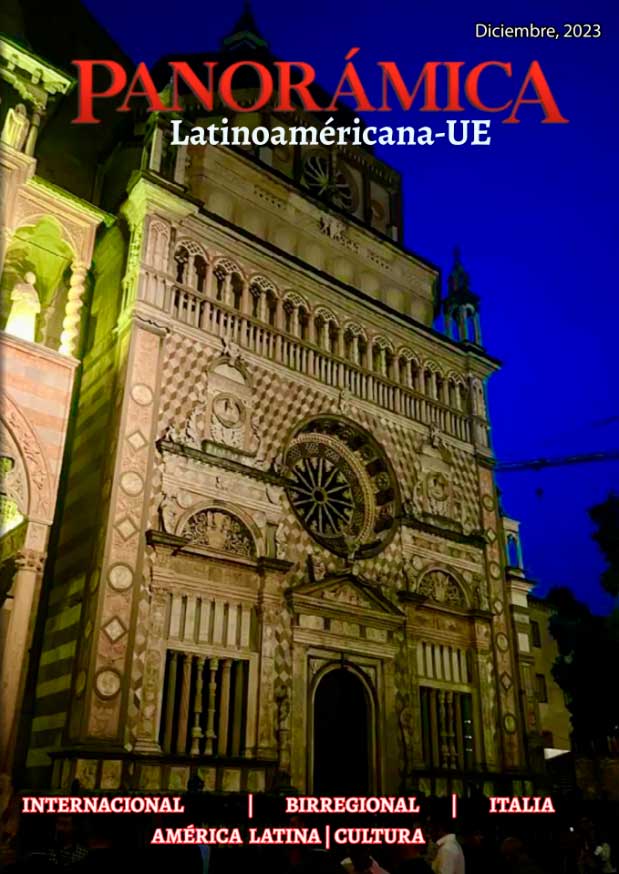Fernando Morales
By opening a book of geography, an European often finds South America on the left page and Africa on the right one. Then, our reader thinks that these two continents end at the 33rd parallel. Nevertheless, he is wrong: indeed, Chile lies 3000 kilometres more south than Africa. In fact, the African continent ends at Cape Town at the 33rd parallel in the southern hemisphere, but Chile ends at the 57th parallel in the southern hemisphere (without taking the Chilean territory of Antarctica into account), at the level of the Diego Ramirez Islands. (These islands are even more south than Cape Horn, which belongs to Chile).

Chile lies so far south that it spreads over 1000 kilometres more south of New Zealand. (Indeed, the two most southern towns in the world belong to Chile: Puerto Williams and Puerto Navarino in the Tierra del Fuego, south of the Argentine town of Ushuaia).
Chile makes part of three continents. Indeed, not only does the Chilean territory extends down South America, but also in Oceania (Easter Island and Salas and Gomez Islands), and Antarctica.
And, finally, Chile is a country lying in the southern hemisphere between the 17th and the 57th parallels, and a country where we can find as many different climates and landscapes as those characterising the northern hemisphere between the 17th and the 57th parallels.

When Europeans thinks about the south, our minds are really often crossed by the tropical heat, and, being the remotest country in the southern part of the world, some might think that, accordingly, Chile is a country with tropical heat, climates and landscapes. Nevertheless, from the Equator, as we know, the more you go down south, the more the climate is cold. Consequently, the two thirds of the country lying in a region where the climates and landscapes are the same as those in the North of Western Europe, Chile has a climate between temperate and cold.
To get an approximate idea of Chile’s dimensions and of its climates and landscapes variety, we must imagine a country as wide as Belgium which continues, on the one hand, north until Norway’s fjords and glaciers, and on the other hand, south until the Chad desert. Santiago of Chile, its capital, would be the equivalent of the city of Grenoble.
Besides, as well as Canada, the USA, Mexico, Colombia, Guatemala, Honduras, Nicaragua, Costa Rica, Panamá; Chile has access to both Pacific and Atlantic Oceans. Indeed, Chile can reach the Atlantic Ocean thanks to the Strait of Magellan, which fully belongs to Chile, through the Beagle Canal and Cape Horn.
It is not easy to imagine a country with such dimensions: 4.300 kilometres long as the crow flies, 225 kilometres wide, 43.000 kilometres of coasts, a surface area of 756.626 km ² (without taking the Chilean Antarctic territory into account), i.e. one and a half time the surface area of France, a plurality of climates and landscapes, and, consequently, of huge wealth.

For example, Chile is currently the first world exporter of copper, fish flour, saltpetre, lithium and of lapis-lazuli; the first fruit and vegetables exporter in the southern hemisphere; the second salmon world exporter after Norway; the second world exporter of sea products after Canada; the third world exporter of wood and its derivatives after the USA and Canada; the fourth gold exporter, and shortly it will also export caviar.
To get an idea of the forest abundance of Chile, we have to know that, on the one hand, the forest area of Belgium, including the Ardennes, amounts to 500.000 hectares, of France to 16 million hectares, and, on the other hand, to 36 million hectares in Chile.
Accordingly, Chile is a country that can be divided into four climatic regions: the first one, which is desert, reminds us the Sahara; the second one reminds us, with its vineyards, its Mediterranean beaches, but also with its ski resorts in the winter, Spain and the South of France; the third one makes us think of Switzerland with its lakes and its woods; and the last one looks like Scandinavia with its islands, fjords, glaciers and its archipelagos.
Two other elements, which give a monumental aspect to the country, are in addition to this: Easter Island, 3.800 kilometres far from the Chilean coasts and at the level of the same parallel as Santiago of Chile, and the Andes whose peaks sometimes reach a height of more or less 7.000 metres.










Los comentarios están cerrados.